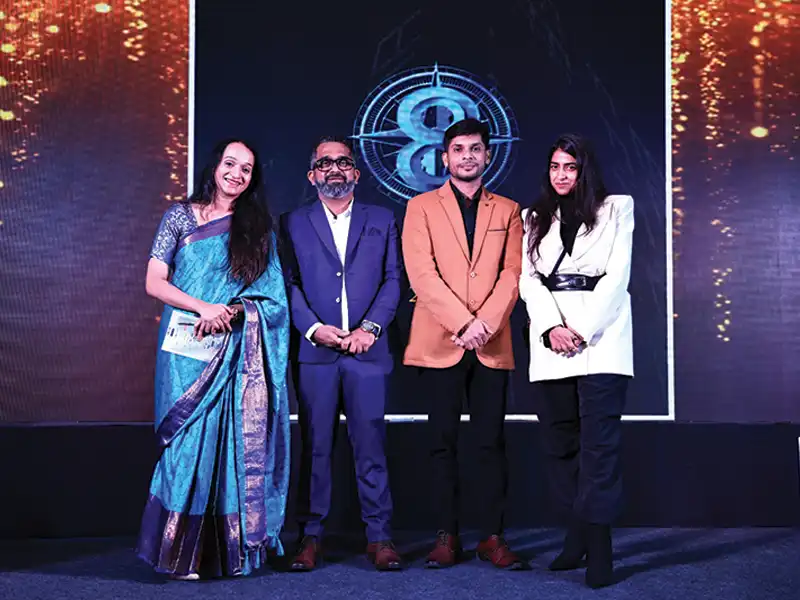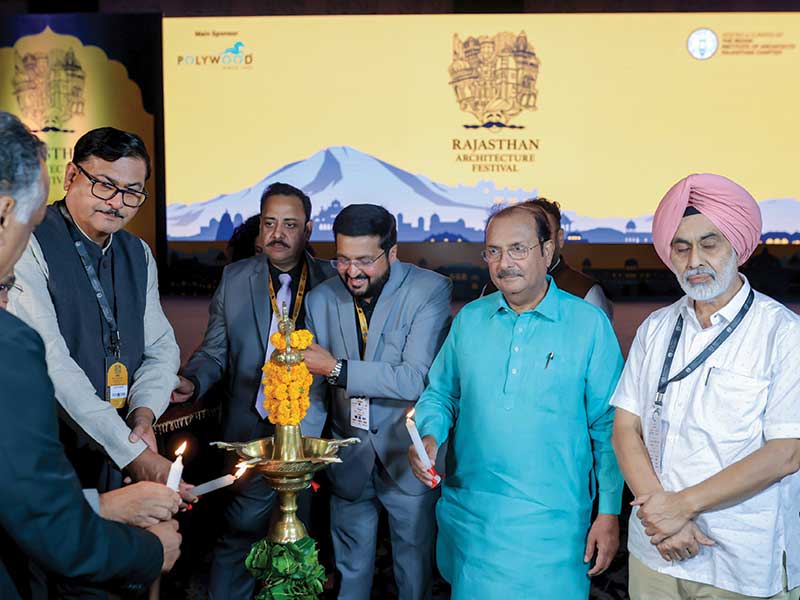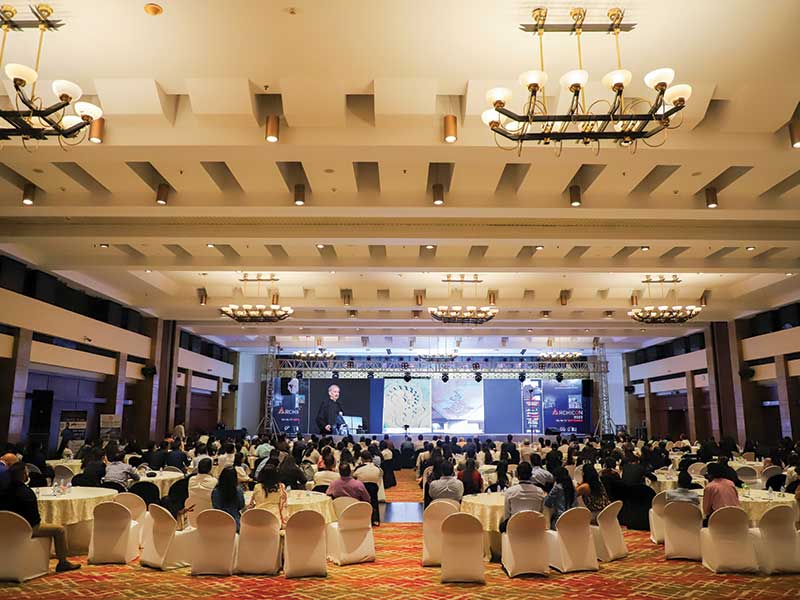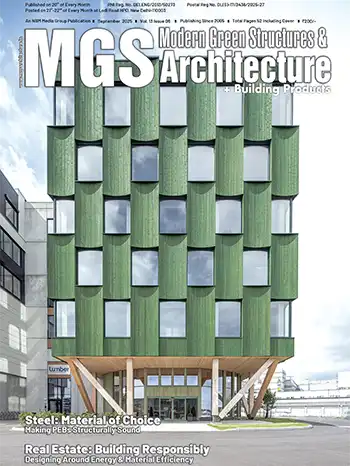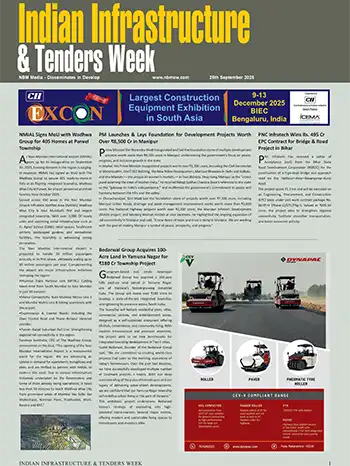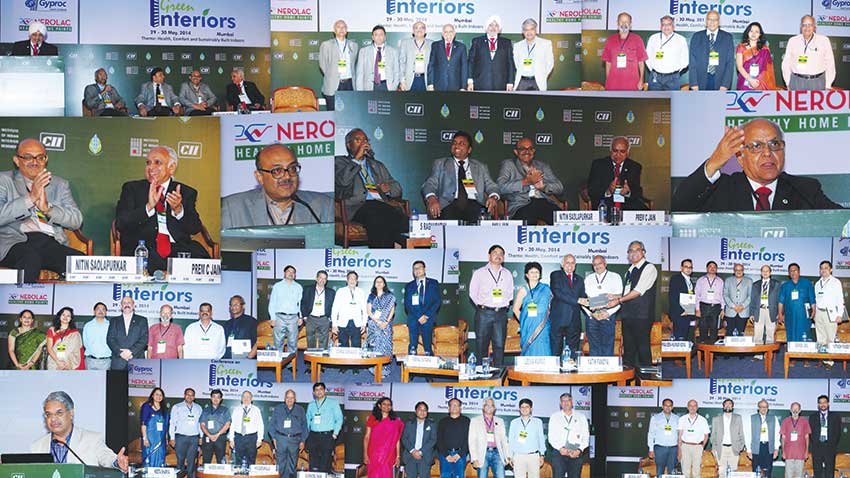
Health, Comfort and Sustainability Built Indoors was the theme encouraged at the two-day Conference on Green Interiors
It seemed appropriate that the first Conference on Green Interiors, a collaborative effort of Indian Green Building Council (IGBC), Confederation of Indian Industry (CII) and the Institute of Indian Interior Designers (IIID), was held at the LEED Platinum certified ITC Grand Central, Mumbai. The palpable excitement of the participants permeated the atmosphere as they attended this much needed interaction on the technical aspects of sustainable interior design.
The underlying message of the conference was "the sustainable design should no longer be an alternative but the only way to survive". There has to be commitment to spend for prevention rather than cure and that requires putting checks and balances in place. The interactions put the responsibility on designers and other professionals to advocate active design that is flexible rather than rigid passive design trends. That said, there was agreement that modern techniques and technology must be adapted with a view to reduce material use and wastage. This is possible as we aim to bring the environment into our interiors rather than building barricades that lead to a dangerous disconnect.
The welcome address by Gurmit Singh, Co-Chair, IGBC Mumbai Chapter set the tone by calling for revival of the Indian tradition of being connected to the environment when designing. With the urban transformation moving at a record pace he cautioned designers and architects to follow the cradle to cradle concept over the cradle to grave practices. With the estimated 68 urban cities in India by 2030 the importance of protecting the environment has to be be prioritized.
With the construction industry multiplying an astounding five-folds with the addition of 75 billion square feet by 2030, in effect "three more India's being constructed" the challenge is to reduce wastage in construction and maintenance, said Dr. P.C. Jain, Chairman, IGBC. He highlighted the need for stretching the use of materials through several lifecycles, to safeguard the health of the nation and humanity as a whole. There is a positive projection that India already has a green space of 2.1 billion sq ft and the IGBC plans to scale this to 10 billion sqft by 2022, he added.
In the sustainably built environment session, the focus was on recalling design concepts from the past in a bid to revive the connection between traditional and modern requirements. Ar. Nitin Saolapurkar, National President IIID informed the audience of the encouraging commitment of the IIID and IGBC to work together for the development of healthy interiors in the country. The speakers emphasized the rich heritage of sustainable design of our country. They went on to coax modern designers to explore the possibilities of keeping these traditions alive in modern structures. Highlighted were architectural elements like courtyards, covered verandahs, traditional window designs and more. There were many principles of architecture reiterated to ensure that architectural design remained contextual and followed an ecological approach. Under discussion also was the impact of architectural design on human behavior. Their presentations did much to motivate aspiring professionals to be inspired by the past to create sustainable interiors for the future.

The next session was an eye opener on the existing health hazards in our so called safe indoors. Approximately 1.3 million people in India die because of indoor air pollution every year and about 27.5% of under-five mortality is because of indoor air pollution. In India, average indoor air pollution is 375 unit grams in cubic meter of air as against the WHO norms of 20 unit grams in cubic meter of air. The connection between Indoor Air Quality (IAQ) and health safety is often ignored as conversations focus on outdoor pollution, whereas there are major ailments from kidney disease down to allergy symptoms like running colds that are a consequence of indoor pollutants.
The speakers rued the lack of customer awareness and prevalent misconceptions of healthy or organic products. The audience was kept engrossed as the hidden health hazards in our indoor environment were brought out. These included paints and fabrics that are major ticket expenditure in any project of any size, yet the top scorers for wrong perceptions by customers with regard to safety. In India there are no laid down norms of indoor pollution by substances like Volatile Organic Compounds (VOCs) in paints or residual chemicals in fabrics. The discussion that followed saw professionals and product manufacturers interacting with stalwarts like Surendra Shah to resolve concerns about natural cooling systems. Highlighted was the need for understanding that just because something was natural, it did not automatically translate into being energy-efficient. This analysis is required to have truly green structures through the complete lifecycle.
The conference offered a podium for the introduction of traditional methods like gypsum and bamboo in their modern avatars. There was a call given for major policy requirements like building codes for composite building safety and a change in mindset in the definition of comfort. There is a need for commitment to see that changes saw ground reality and expression. And the trigger points would include unlearning practices that are not environment sensitive. These would support the cause of holistic, healthy and sustainable design leading to sustainable growth supporting betterment of the built environment.

